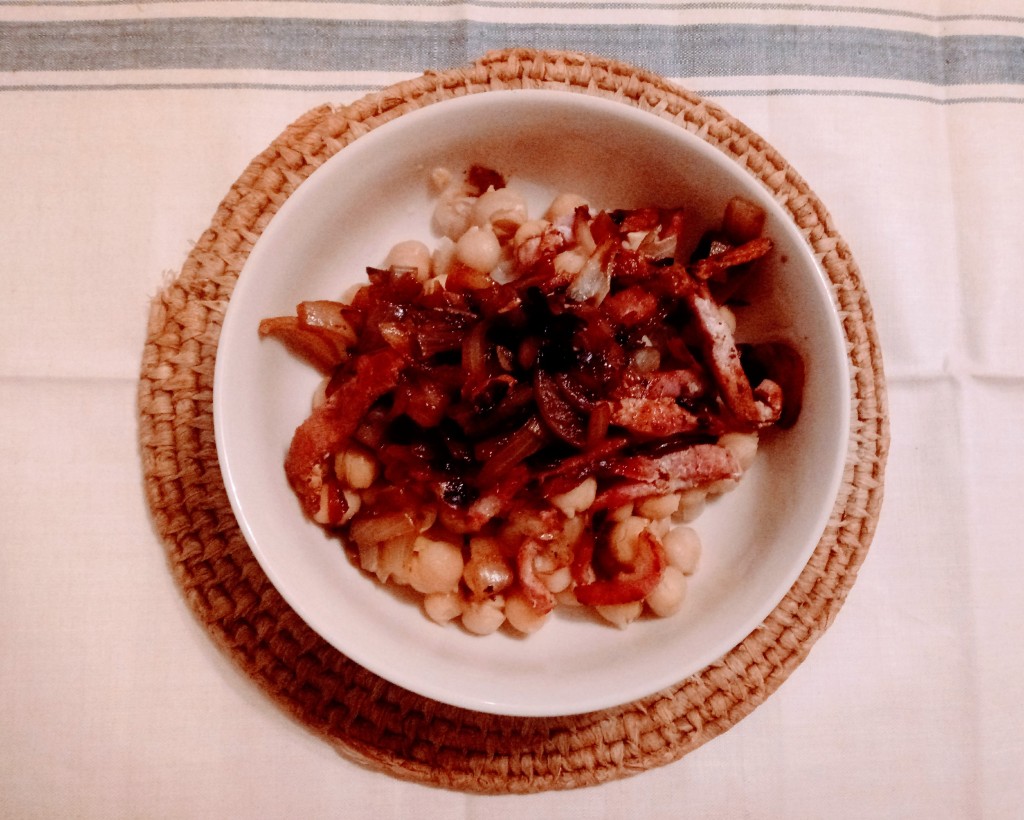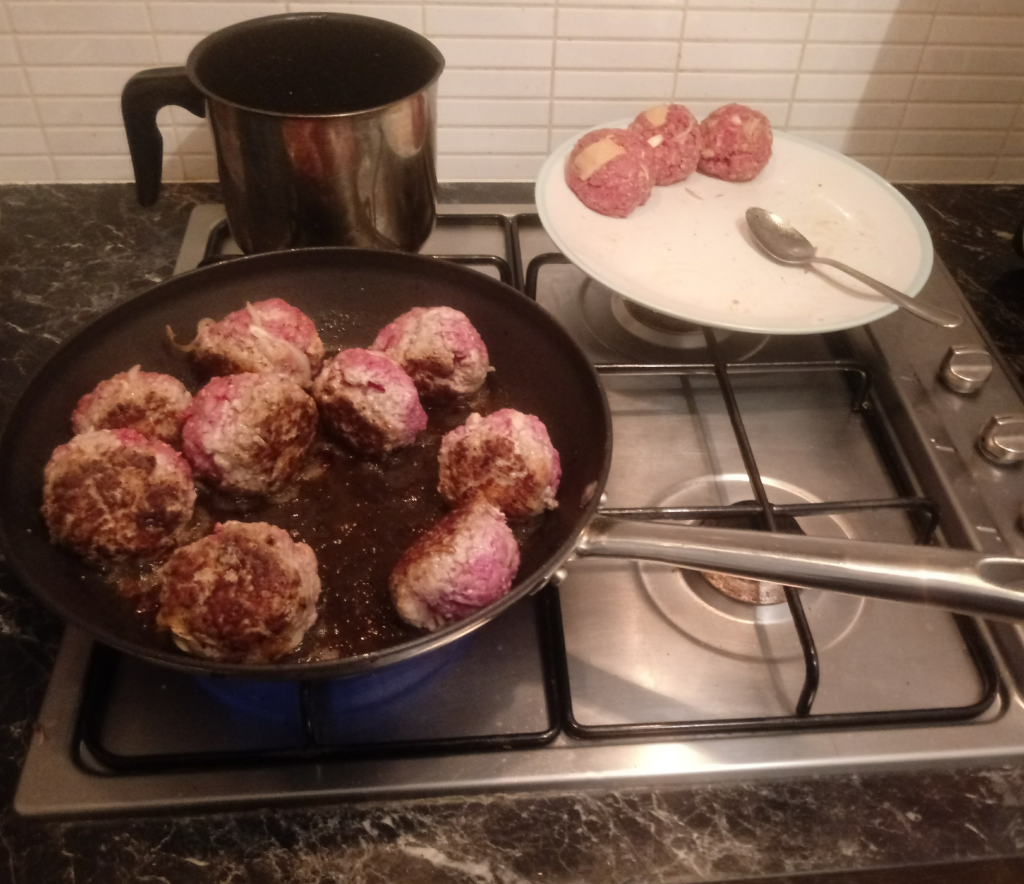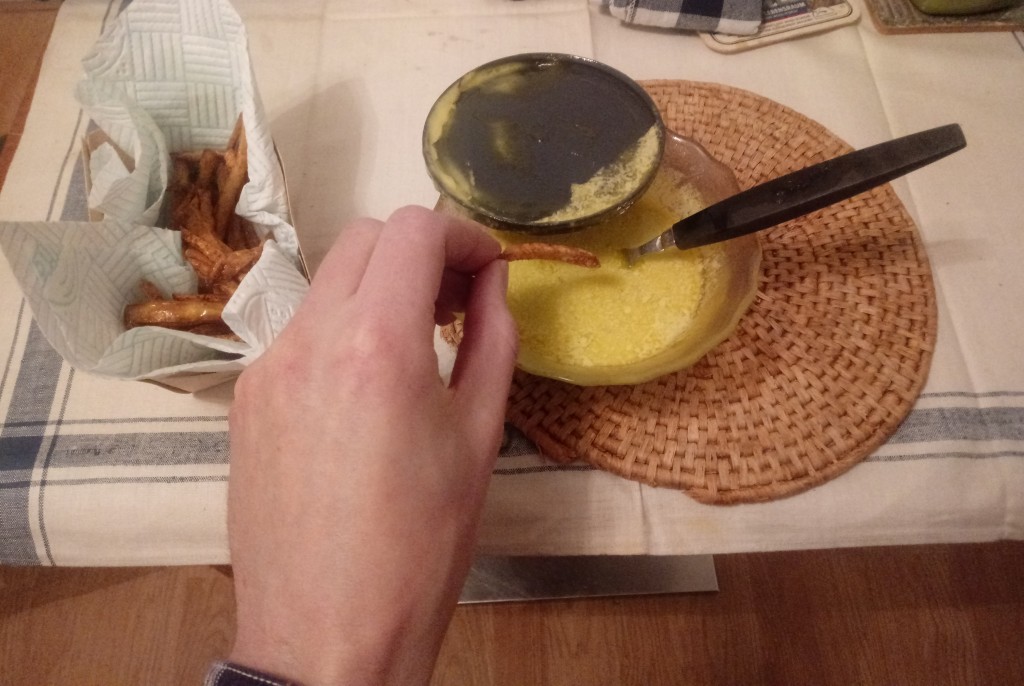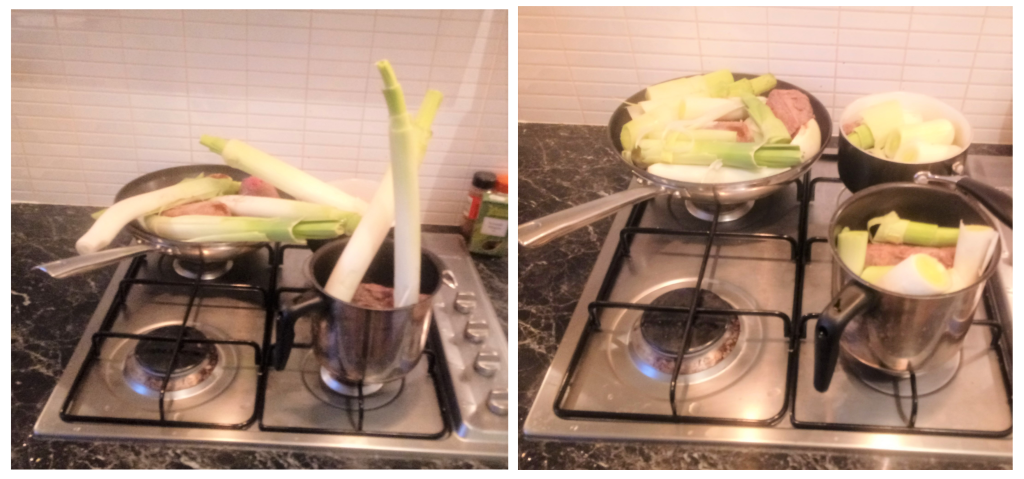
According to the internet, you say “Es mīlu Tevi…” or – possibly – cook your beloved some special peas topped with fried deliciousness.
Latvia, with its niche language, distinctive flag (“carmine red with white horizontal stripe“) and flourishing food scene, has fascinated me for a while. The efforts of its plucky football team and a controversy over the correct spelling(s) and pronunciation of “Euro” in Latvian (it sounded highly entertaining on Radio 4) only serve to add to its mystique. With a national dish that shouts “comfort food” all over, I start with high hopes that Latvia will rapture my palate with a new winter favourite.
On the nature front, Latvia contains a lot of forest, grassland and wetland. As an EU member state, it benefits from LIFE-funded projects such as these efforts to improve the management of forest and grassland protected areas. The EU loves nature reserves and protected areas. They work quite well in Europe. People generally respect them, and there is usually enough money and/or public goodwill to make sure at least a few people are looking after them.
History, though, says Europeans like drawing lines on maps. When Europeans colonised rather too much of the world, the border lines they drew were often (probably always) something of a problem. Now, despite its internal policy of mutual co-operation and integration, the EU is still drawing lines abroad a century or two later.
“30 x 30” – a commitment to protect 30% of the world’s land (and, in the end, sea) was one of the most fiercely-contested topics at Convention of Biological Diversity COP 15 the other month. Proponents such as the EU saw it as necessary to achieve their high-ambition nature goals. Opponents – mostly from countries dealing with a European colonial legacy – said it was too divisive, impractical to carry out without infringing on local people’s rights, and needed more money to implement properly than the wealthier nations were willing to give them. Who won? Why, the nations with the most money and influence, of course. 30 x 30 is coming soon to a place near you.
Now, I have to say that – as worried as I am about the human rights question – I am not dead against 30 x 30. While probably not best as a blanket option across the world, it definitely helps in some cases. Now it has been agreed in the Global Biodiversity Framework, though, it needs doing extremely carefully. Can the five principles we looked at in the previous post tell us something about how?
If there is one of these principle my friend Rosalind Helfand embodies, it has to be the “doing.” Roz seems to juggle chairing meetings, judging sci-fi literature contests, coordinating initiatives, lobbying politicians and being a fun human being with amounts of vigour that would leave most other people taking a long lie-down in a quiet room. Among the many hats she wears, one is as Co-founder of the California Global Biodiversity Working Group. California is a much more environmentally conscious state than many others within the US (which is notably not a party to the Convention). Rather than sit by and watch from the sidelines, though, California wants to be involved with the GBF.
Roz and others in California have already put in a lot of effort around 30×30 since it became clear it would enter the Framework. Speaking of her work with the California Natural Resources Agency, she says:
In California, we’re focusing on the importance of an inclusive approach to implementing 30×30 that engages tribal partners and is iterative as we frequently convene stakeholders in discussion about our path forward. It’s hard, but it’s gained such diverse support. We shared this work at COP15, where California joined the Subnational Government Taskforce of the High Ambition Coalition for Nature and People.
– Rosalind Helfand, Co-founder, California Global Biodiversity Working Group
Now, one could look at this and say: “Isn’t that just more talk?” This, however, is where preparation is key to further action. A lack of preparation and unity hamstrings further action. A well-prepared strategy lays the path for action, which then enables more action, step by step until the goal is reached. The two go hand in hand. Both are necessary, but neither is sufficient. As much as Roz is a doer, one way she’s able to do so much is because she makes efficient preparation.
The CBD, of course, also tries to foster this virtuous cycle – yet California’s approach looks a little different. Key features of the GBF were pushed through after back-room deals between the power players. Cali’s Global Biodiversity Working Group, though, is based on taking the big ideas from the top and putting them to the grassroots – not the politicians – for decision. Here’s hoping they can find a just, fair and locally-appropriate way forward.
Moving back to the food, I found out Latvia’s national dish is pelēkie zirņi ar speķi un ceptiem sīpoliem – grey peas with bacon and fried onions. Latvia, which lies on the Baltic Sea, has an annual average air temperature of less than 6°C. Little wonder, then, that ‘Baltic’ is a vernacular word meaning ‘very cold’ in multiple British dialects – and Latvians like to fight the Baltic cold with hot, greasy, energy-rich sustenance.
Given pelēkie zirņi‘s lack of popularity in world cuisine, I had to go full Latvian to find a decent recipe. Thankfully, Google Translate does a nice line in Latvian to English, so I didn’t have to wait till I’d learnt the language/made a Latvian friend before I could cook the dish. The Google approach also led to a cheerful mix of quaint phrases and recipe confusion. Uncle Google seemed unsure whether I should be using bacon or sliced brisket (I went with bacon, but beef brisket would work as an alternative). However, on the up side, I learnt that grey pea suppers:
“… are suitable not only for bringing them to the table everyday, but also for Latvian celebrations.”
I also liked the look of the photo article entitled How people had fun at the ‘Celebration of winter flavors’ in Sigulda. Hopefully Valentine’s Day is also going down well this year – with as few commercial distractions as possible.
Recipe: “Pelēkie zirņi ar speķi un ceptiem sīpoliem” from delfi.lv’s Tasty section.
Substitutions: Search as I might, the closest thing I could find to grey peas in Glasgow was chickpeas. Is it sacrilege to admit to using chickpeas for this?
Makes: 2 half-dishes (18.5g carbs each; 37g carbs the whole pan).
Rating: 60 – plenty of simple, hearty potential, but just tasted a bit plain in the end.




















Borscht and Bombs
space
Since the fateful day Russia started its “special operation in the Donbas,” Ukraine has never been far from the news. The war in the country has also generated a raft of conservation headlines. Last year, I sat in international nature meetings where Ukraine, supported by most of Europe, criticised Russia for the destruction of Ukrainian ecological areas. Russia responded by accusing them all of politicising the Convention. Months later, the Russian delegation derailed the closing session of the biodiversity COP by raising procedural objections to ‘bias’ in the election of regional representatives. While bias seemed to be short for ‘not electing a Russian,’ the objection was bizarrely successful. It triggered a lengthy voting process that broke down in the early hours of the morning, leaving the elections invalidated. On top of all that, there is the story about grain. The crisis around Ukrainian wheat harvests has led some to call for a new agricultural revolution – which the charity BirdLife has strongly condemned as a ‘Trojan horse’ tactic favouring the agrochemical industry.
Back in simpler times, I found a lovely Russian-rooted website describing how to cook Ukraine’s (extremely red) national dish, borscht. This is a thick, earthy soup, perhaps made more famous by American Jews – but the original recipe is just excellent. Food doesn’t usually stop wars, but friendship within the cooking community is a lovely taste of harmony in troubled times. I commend the recipe to you as I pray once more for peace between these two great countries.
Recipe: Borscht Recipe (Iconic soup made easy!) by Julia Frey of Vikalinka
Substitutions: Ham ribs instead of salt and pork ribs.
Makes: 4 portions
Carbs: circa 20g per portion, by my calculations – Julia’s come out with more or less the same answer, too.
Rating: 80. Impressed by the flavour – better than I expected.
Share this:
1 Comment
Filed under food, News & comment
Tagged as beetroot, biodiversity, CBD, conflict, conservation, COP, food, grain, nature, Russia, soup, Ukraine, vegetables, war, wildlife